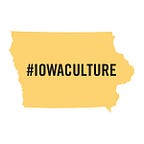When Sauerkraut Became ‘Liberty Cabbage’
America has a long and contentious history with immigration.
Most immigrants came to America for new economic opportunities or religious freedom. Some came seeking refuge while many were brought here against their will.
In the 19th century, the United States received some 5 million German immigrants, many of whom settled in the Midwest to buy farms or become tradesmen and professionals in cities. By the early 1900s, they were the largest immigrant group in the country and had become highly respected members of their communities.
But that changed when the United States entered World War I. Patriotism and paranoia swept through the country, and German-Americans suddenly found themselves the targets of intense scrutiny.
Some of the country’s reactions to German-Americans seem almost farcical in hindsight. In the same way that french fries became “Freedom Fries” 15 years ago — when the French government withheld support for U.S. military action in Iraq — sauerkraut became “Liberty Cabbage” and hamburger was called “Liberty Steak” during World War I. Frankfurters were renamed “Liberty Sausage” before they became plain old hot dogs.
And the backlash didn’t stop in the grocery store.
Newspapers started to report outbreaks of German measles as “Liberty Measles.” Dachshunds were called “Liberty Pups,” and German shepherds became “Alsatian Wolf Dogs.”
Saloons removed pretzels from their bars, and the temperance movement began, in part, as a protest against “Continental Sundays,” a German tradition revolving around outdoor concerts, picnics and beer, which bothered many Protestant groups that supported “Blue Laws.”
The music of Bach, Beethoven and Brahms disappeared from music programs. Schools stopped teaching the German language, and German-language newspapers started printing in English instead — or simply shutting down.
The U.S. government passed espionage and sedition laws. Many Americans were encouraged, or even forced by unlawful means, to buy bonds called “Liberty Loans” to support the war effort.
The Councils of National Defense encouraged citizens to perform patriotic duties, and the American Protective League sussed out suspected German spies and sympathizers.
In Iowa, Gov. William Harding issued the so-called “Babel Proclamation,” banning the use of foreign languages in public, schools, church or over the telephone. The Iowa towns of Germania and Berlin changed their names, respectively, to Lakota and Lincoln.
Of all the German-Americans living in Iowa at the time, however, none were more scrutinized than those in Davenport and Scott County.
Called the “most German” of cities in Iowa, Davenport had attracted more than 40,000 to Scott County since the 1850s. At the outbreak of World War I, between one-quarter and one-third of the county’s 250,000 residents were of German descent.
“You have all these good German-Americans in Davenport who have helped the community thrive and grow, and then you get U.S. entry into the war, the draft and the demonization of those same people,” said Leo Landis, Iowa’s state curator, who called Davenport the “premiere flashpoint” of anti-German sentiment in Iowa.
Davenport’s German-Americans were often accused of being disloyal to America and were hauled before the Scott County Council of National Defense on tips from anonymous accusers. Many were ordered to pay money to the Red Cross, purchase “Liberty Loans” or join patriotic organizations to support the Allied cause.
A few German-Americans in Scott County had their homes or businesses painted yellow, a color associated with disloyalty. Some residents were dragged into the street or public square and forced to kiss an American flag and proclaim their loyalty. Some were beaten. Others were marched out of town.
At Davenport High School, students protested and burned more than 500 German-language books, maps and pictures of the Kaiser that had been removed from their library.
The German-American Pioneer Association became the Old Settlers Association, and the German Savings Bank, which German immigrants founded in 1869, was renamed the American Commercial Savings Bank.
In a front page statement on Sept. 7, 1918, a highly successful daily German language newspaper called Der Demokrat said it would cease publication due to anti-German prejudice.
Before the war, German culture thrived at Davenport’s Schuetzen Park, which boasted an inn, dance hall, zoo, bowling alley and a roller coaster that drew up to 12,000 people in a single day for major events. But the park changed its name to Forest Park during the war. People stopped visiting, and the park closed in 1923.
These events and others had a long-lasting effect on German traditions in Iowa.
The passing of older generations and the natural loosening of ties to the Old World began long before 1917, but the war years sped up the Americanization of German-Americans in Iowa.
Later generations identified less with their German roots, and many Iowans stopped speaking the German language. Eventually, many German traditions faded into the broader sweep of American culture.
— Jeff Morgan, Iowa Department of Cultural Affairs
